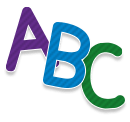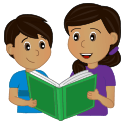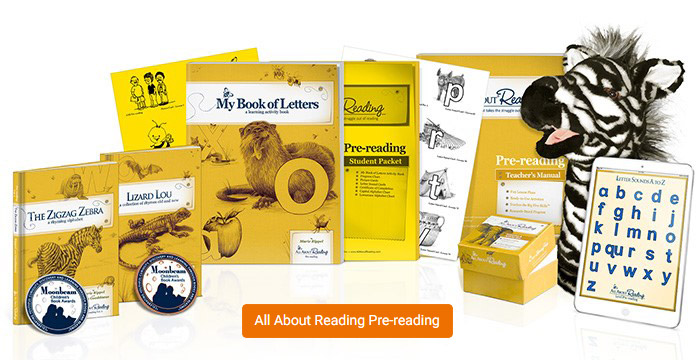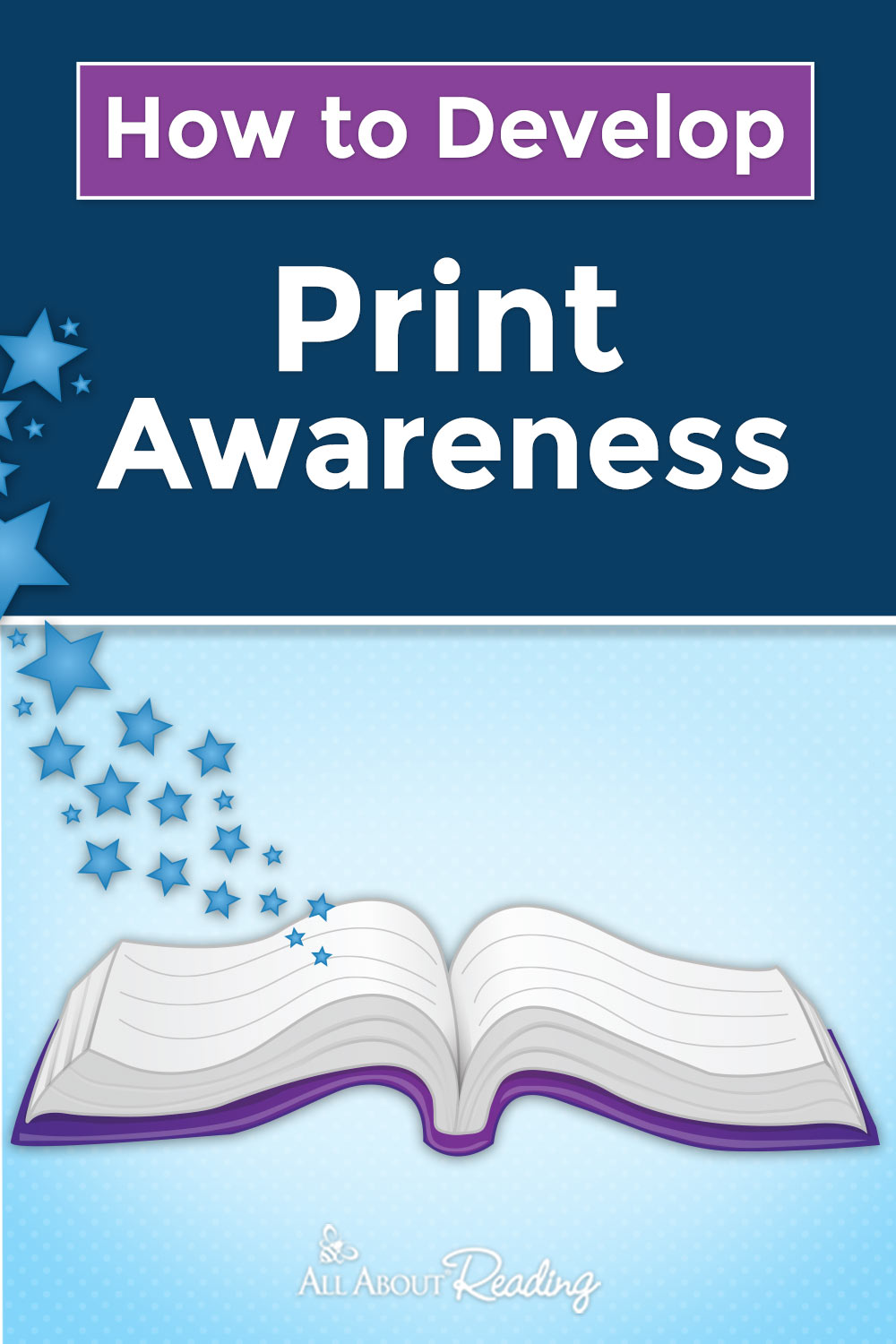How to Develop Print Awareness

What Is Print Awareness?
A child who has print awareness understands that print represents words that have meaning and are related to spoken language.
Kids who have print awareness are able to do things like hold a book correctly and understand that books are read from front to back. They also realize that sentences are read from left to right.
Print awareness is one of five critical pre-reading skills. Without print awareness, children are unable to develop other literacy skills such as reading, spelling, and handwriting.
How Print Awareness Develops
Kids who are read to on a regular basis naturally pick up many of the skills by following the examples of the people around them.
A child’s print awareness develops when those close to him point out letters and words in text found in the child’s environment. It also develops through playing word games, when you turn the pages of a book, and when you run your finger under a line of text as you read.
Quick Check for Print Awareness
Here are five signs that indicate that your child has print awareness.

Your child knows how to hold a book correctly. If you hand your child a book upside down, he will turn it right side up before looking through it.

Your child understands that books are read from front to back and from left to right and knows how to turn the pages in the correct direction.

Your child pretends to write by scribbling or writing marks on paper. He understands that the “words” he is writing communicate meaning.

Your child points to text and asks what it says. He has become curious about the meaning of the printed text he sees all around him.

Your child picks up a familiar book and “reads” it aloud. He understands that the printed words are connected to the story.

5 Fun Ways to Develop Print Awareness
The best way to develop print awareness is through a variety of print-rich experiences. Here are five engaging activities to enjoy with your child.

Teach the Alphabet
Teach your child to recognize the letters of the alphabet through the activities in this blog post. You’ll find ABC Playdough Mats, ABC Bracelets, Tactile Letter Cards, and more.

Tell a Story
Have your child tell you a story. If your child needs a prompt, wordless picture books are great for this! Write it down on paper for her to illustrate.

Make a Sign
Help your child create signs for the doors in the house, such as “Welcome to Lexi’s room,” “Bathroom,” “Mom and Dad’s Room,” or “The Kitchen Is Open.”

Read the Mail
When the mail is delivered each day, have your child help you sort it according to which family member’s name is on the label. If interesting cards, ads, or magazines arrive, read parts of them aloud.

Read Aloud
Read lots of picture books aloud to your child. Read reviews of fantastic picture books to share together, or download our extensive list. As you read to your child:
- Mention the parts of a book as you read. “Look at this cover! This book must be about elephants!” “The End…that’s the last page of the book.”
- Have your child help you turn the pages.
- Model that we read from left to right by occasionally running your finger under the text as you read.
- Ask your child to point to the first word on the page.
- Occasionally point out periods and exclamation points.
Print Awareness Is One of the Big Five Skills
Print awareness is one of the five critical skills for reading readiness that we call the “Big Five Skills.” The other four skills are:
If you’re ready to tackle the rest of the Big Five Skills, be sure to check out the All About Reading Pre-reading program. Your student will enjoy special games, crafts, and story time read-alouds, and you will love the way your student effortlessly learns essential pre-reading skills.

Do you have any questions about print awareness? Post in the comments below!
















Bobbie Nichols
says:I appreciate all of the great lessons you have compiled for those who are struggling. I plan to help my Greatgrand daughter because
she’s been struggling since the pandemic. She will be held back at the end of school years. Repeating the 4 grade! Thanks again!
Robin
says: Customer ServiceYou’re welcome, Bobbie.
Let me know what specific questions or concerns you have. I’m happy to help!
Ngut bang biel
says:How do you understand about alphabet, letter and sound recognition, print awareness and book knowledge?
Robin
says: Customer ServiceNgut,
This understanding about the alphabet, letter and sound recognition, and all comes from educational research that has been published over the last few decades. One that is particularly informative is the National Reading Panel (2000) report Teaching children to read: An evidence-based assessment of the scientific research literature on reading and its implications for reading instruction. Washington, DC: National Institute of Child Health and Human Development.
Let me know if you have additional questions. I’m happy to help.
Emma Divinagracia
says:Thank you so much for this additional knowledge. A great help really to my first grade learners. God bless!
Robin
says: Customer ServiceYou’re welcome, Emma! I’m glad this will be helpful for your learners.
Winnie
says:When they say “print” in Foundation phase, they mean print awareness?
Robin E.
says: Customer ServiceI’m sorry, Winnie. I’m not sure what you are referring to in “foundation phase”. I could not find that referenced in this blog post.
Can you provide more details about your question? I am happy to help!
Seema
says:Very informative article thanks a lot
Olusola
says:Thanks so much.
I’m taking a course on early childhood education. Teaching Reading skills early is critical. This resource is fantastic in getting the job done.
Thanks.
Shalom 🙏
Robin E.
says: Customer ServiceYou’re welcome, Olusola. I’m glad this resource is helpful.
Cecelia
says:I like the way this is explained.
Robin E.
says: Customer ServiceThank you, Cecelia!
Henry Tara
says:Great ideas. Thanks.
Jakari
says:So you telling me this child suppose to skip beginning skills and jump to something he haven’t been taught
Robin E.
says: Customer ServiceI’m not sure what you are referring to, Jakari. This blog post details how to help a student develop the foundational skill of print awareness. It is one of the beginning reading readiness skills we recommend students master before moving on to learning to read.
Niki H. Blake
says:Love this so much!! People don’t realize how important print awareness is!
Robin E.
says: Customer ServiceI’m glad you enjoyed this, Niki!
Christina Gould
says:This is very informative. I did not know about print awareness. Thanks for posting!
Quaynaya Bey Jean-Baptiste
says:Loved the article! Before I even read to my child I start to mention the parts of the book front cover, spine, back of the book and that we read from left to right.
Robin E.
says: Customer ServiceSuch a great way to approach reading to a child, Quaynaya! Thanks for sharing.
Abbey Meraz
says:Great information and great ideas to develop print awareness. I love your program and what you do to help us teach our children.
Robin E.
says: Customer ServiceI’m pleased to hear the program is working out so well for you, Abbey!
Paul Miron
says:I realize we did most of the things mentioned in this article, without being aware what they were, to the point that my son would listen to a story on a CD while lokking at the pages of the book, turning the pages exactly where the CD audio version was at.
Robin E.
says: Customer ServiceSounds like a wonderful way to develop print awareness, Paul!
Anu Abraham
says:Thank you for the incredibly informative posts.
Sara Scoggan
says:Nice post…I always like to announce the author and illustrator before I read a book. My 2-yesr-old daughter pretended to read a book and made up names for the author and illustrator, too!
Robin E.
says: Customer ServiceThat sounds so cute, Sara!
I always announce the author and illustrator too when I read aloud. I like to think it shows that writing and illustrating are worthwhile pursuits!
Lauren Ashley
says:Thanks for this informative post! We’ve loved using All About Reading this last year while homeschooling my son for kindergarten, and I’m looking forward to continuing with him this coming year. As well as introducing it to my 4-year-old daughter!
Robin E.
says: Customer ServiceIt’s great to hear that All About Reading has been working out well for your son, Lauren!
Elizabeth Horton
says:This is great for prepping kids for kinder
Robin E.
says: Customer ServiceThanks, Elizabeth! Yes, this is one of the The Top 5 Reading Readiness Skills for success in learning to read.
Sherry
says:My son is severely dyslexic but in the pre-reading stage he had great print awareness because of all the stories I read to him. In my teaching career, I’ve seen K kids who, even after been modeled multiple times, still haven’t figured out which way a book goes. Which goes to show that their exposure to books was non-existent before coming to K. Starting from so far behind makes it so, so hard for them reach their potential!.
Robin E.
says: Customer ServiceThank you for sharing this, Sherry.
Kim
says:Such important info that is often overlooked for the prek age. Learning to read starts way before introduction of phonics.
Robin E.
says: Customer ServiceYes, so true, Kim!
Anna G
says:Great suggestions! Love it!
Lauren
says:I never thought about the mail before. That’s a cool idea to try.
Jess Tomlin
says:Love all the suggestions and additional information given.
Jerolyn
says:I am so thankful for the many informative and educationally sound articles that are continually written and made available by the AAR staff. These articles are a tremendous resource and help in teaching our children to read and troubleshoot problems. Thank you!!
Robin E.
says: Customer ServiceThank you, Jerolyn! It’s wonderful to hear that these articles and resources are helpful.
Morgan
says:Great ideas!
Mary Nieber
says:I love the usage of real life examples with mail and creating signs. I’ve found my toddler and preschooler are both eager to know what something says no matter what they find letters and words on (signs, cereal boxes, etc.).
Laura
says:Love the idea about the mail!
T Gayes
says:Thanks for this helpful info!
Wendy
says:Thank you for the great tips! My children also love acting out stories- I think this has definitely sparked their love for “reading”/listening to books! Looking forward to learning more about your program.
Robin E.
says: Customer ServiceWendy,
A great place to start with learning more about our programs is our overview video, Why Our Programs Work (you may need to scroll just a bit to see the video). Let me know if you have specific questions.
Rachel
says:Thank you for some valuable information about Print Awareness